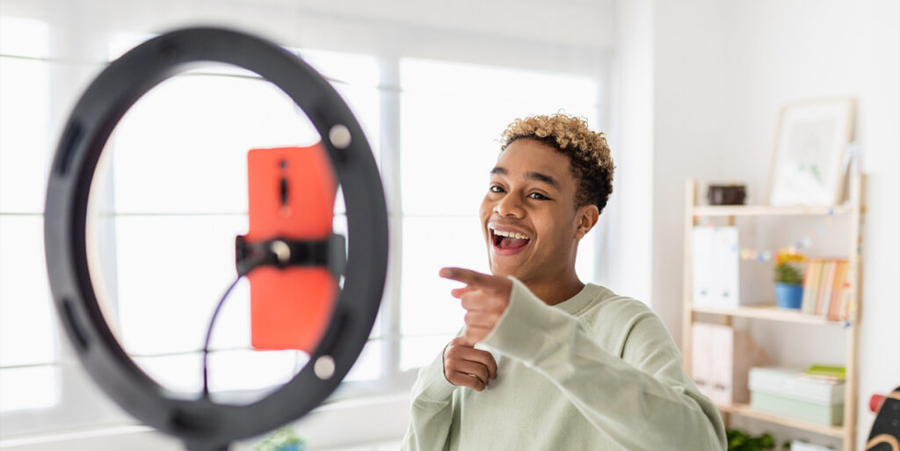What’s up everyone, it’s ya girl Allison here. Make sure to smash that like and subscribe button. But first, let’s talk about today’s awesome sponsor …
If this sounds familiar, you may have been on any social media site in the last, oh, five years or so. Influencers who have attained celebrity status have parlayed their followings into sometimes eye wateringly lucrative brand deals.
But some users are growing weary of the constant promotion, even from creators they otherwise enjoy.
According to an April 2023 survey from EnTribe, 51% of users simply scroll past posts from influencers when they see them in their feeds. A full 29% said they flat-out hate influencer content.
But Sinead Norenius-Raniere, VP of product and creator marketing strategy at Cision, says not all influencers are created equal.
“I think that people are feeling fatigued around the macro celebrity influencers and the constant, very high-polished sponsored ad,” Norenius-Raniere told PR Daily in a recent interview.
Norenius-Raniere says that celebrity-level influencers can feel unrelatable, their perfectly aesthetic social media posts unattainable for most of us. And they’ve reached such rarified air that they often no longer interact with their followers, losing the personal touch that often makes them feel, well, influential.
But there are other kinds of influencers — and other kinds of ads. Think of smaller, more accessible folks.
“When I can actually have a conversation with an influencer that I follow that has maybe 10,000 followers, and he or she responds to me, I’m going to have a lot more of a connection to that person than I would to just purely getting a one-sided relationship as you would find with Kim Kardashian,” Norenius-Raniere explained.
Indeed, Norenius-Raniere said they’re seeing better results from smaller-level influencers than the big names. However, no matter what size of influencer you’re working with, the most important factor is ensuring you find the right match between product and persona. Even better if you can find a micro- or nano-influencer who already loves your product and sings its praises. In that case, a free product partnership might be just as impactful as a paid deal.
“The most important thing is for a brand to understand the influencer that they’re working with, the audience that is associated with that influencer and does it make a good connection,” Norenius-Raniere said.
That means helping clients see past their pre-conceived notions of who they should work with. Just like many media relations clients might say they want to be in the New York Times and the Wall Street Journal without considering their audience, it’s up to those of us who work in influencer relations to guide our clients toward the clients who really serve their business goals rather than their ego.
For instance, a client recently wanted to target the female haircare space and had a particular influencer in mind. But when Norenius-Raniere analyzed her audience, she found that 80% of that influencer’s audience were men.
“That’s the thing you need to raise and say, ‘Well, what, whoa, wait a minute: does this actually make sense for her audience, let alone who you are trying to reach?”
It’s also important to remember that working with influencers isn’t as simple as placing an ad on a TV network. The influencer has to agree that your partnership is a good fit for them, too.
“We’ve worked with some influencers that have pushed back and said, ‘thank you for the opportunity, but I know my audience are not gonna like this,’ Norenius-Raniere said. “And you know, what, I always think, good for you.”
Because (good) influencers know their audience so well, they should be involved in guiding strategy. If you just hand them a script and expect them to read it, you’re losing a great deal of the benefit of hiring them in the first place.
“They know their audience, and the more restrictions and constraints that you give influencers, it becomes a struggle that also affects authenticity, as well,” Norenius-Raniere explained.
In the future, Norenius-Raniere expects to see impactful influence work among those with even smaller followings. People who don’t even identify as influencers, but those with regular audiences of friends. Folks like you and me just having conversations in social spaces with their friends about what they love — or hate.
“Usually we’re all talking about B2C or B2B,” Norenius-Raniere said. “I think we need to start talking more about consumer to consumer marketing.”
So don’t be afraid to think small.
___
This article first appeared in www.prdaily.com
Seeking to build and grow your brand using the force of consumer insight, strategic foresight, creative disruption and technology prowess? Talk to us at +971 50 6254340 or engage@groupisd.com or visit www.groupisd.com/story




